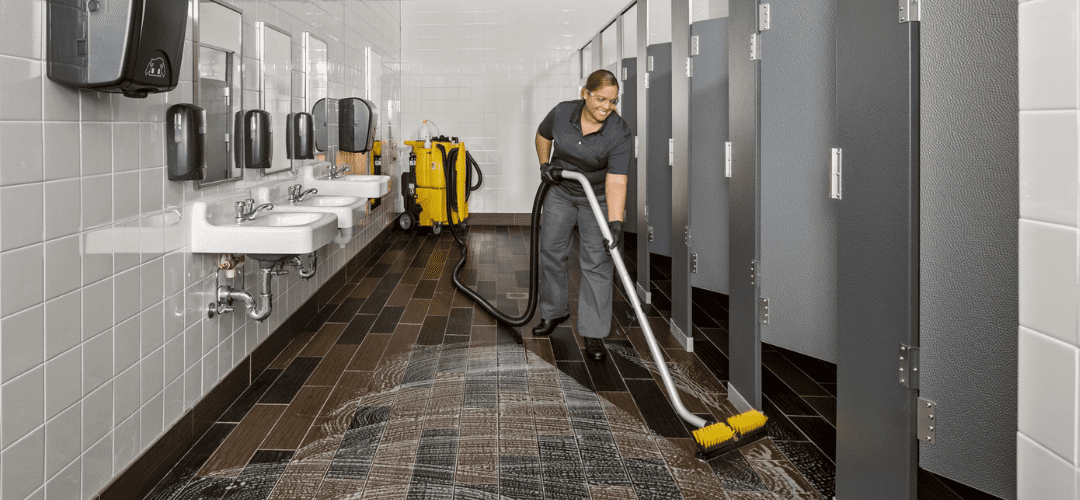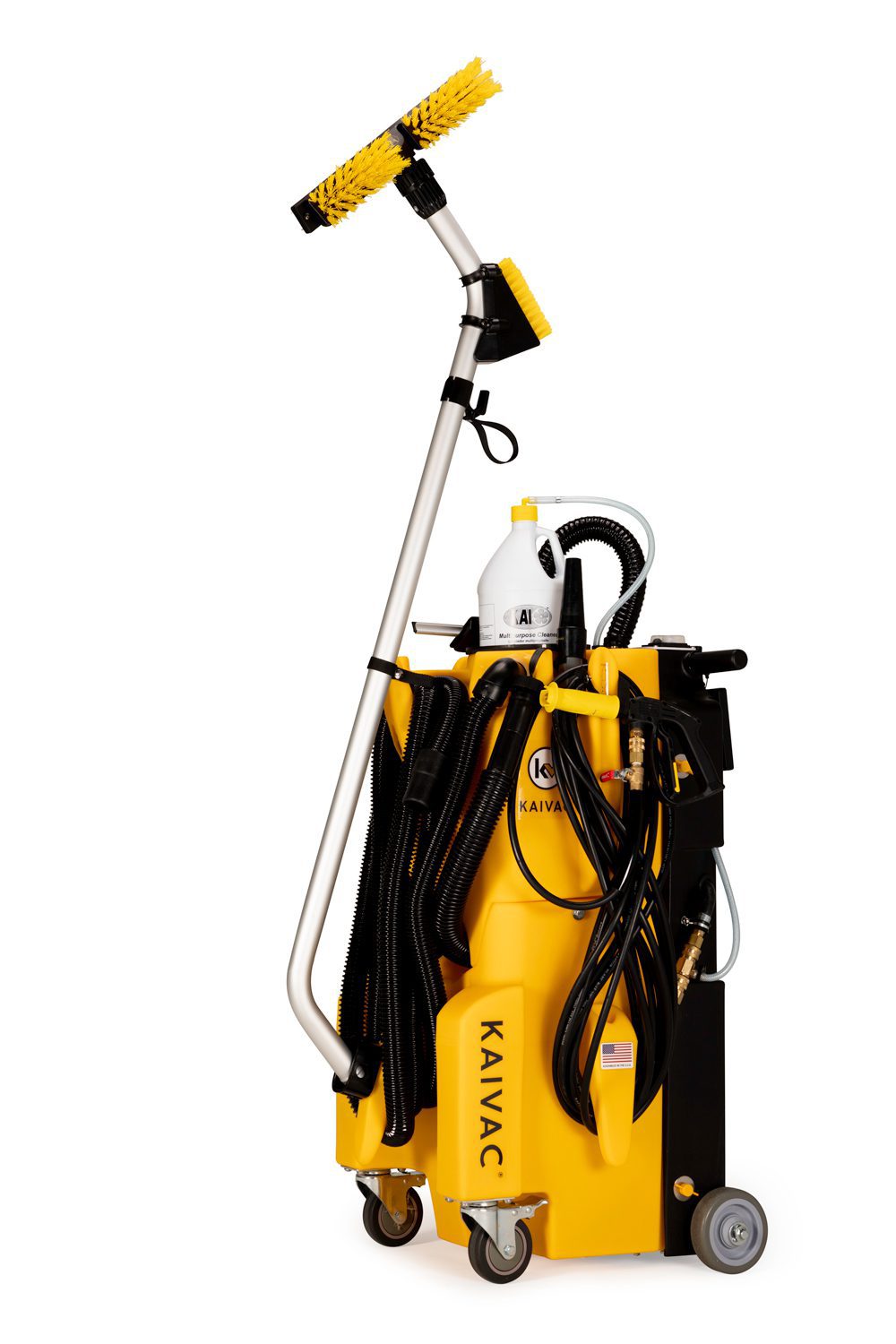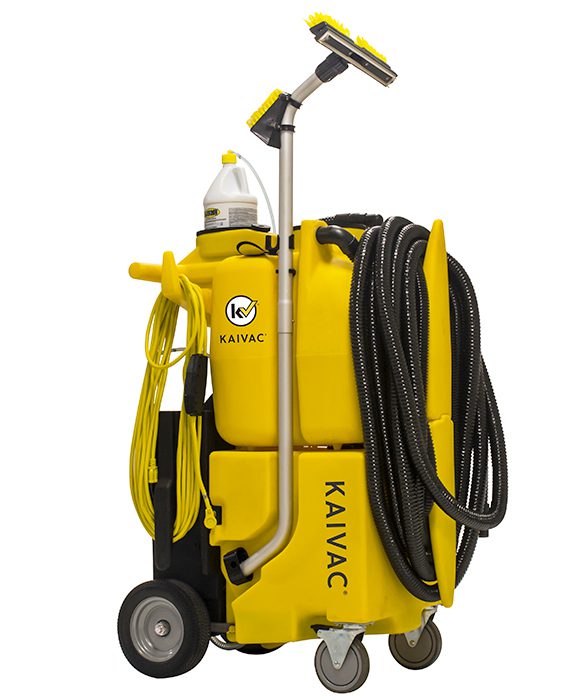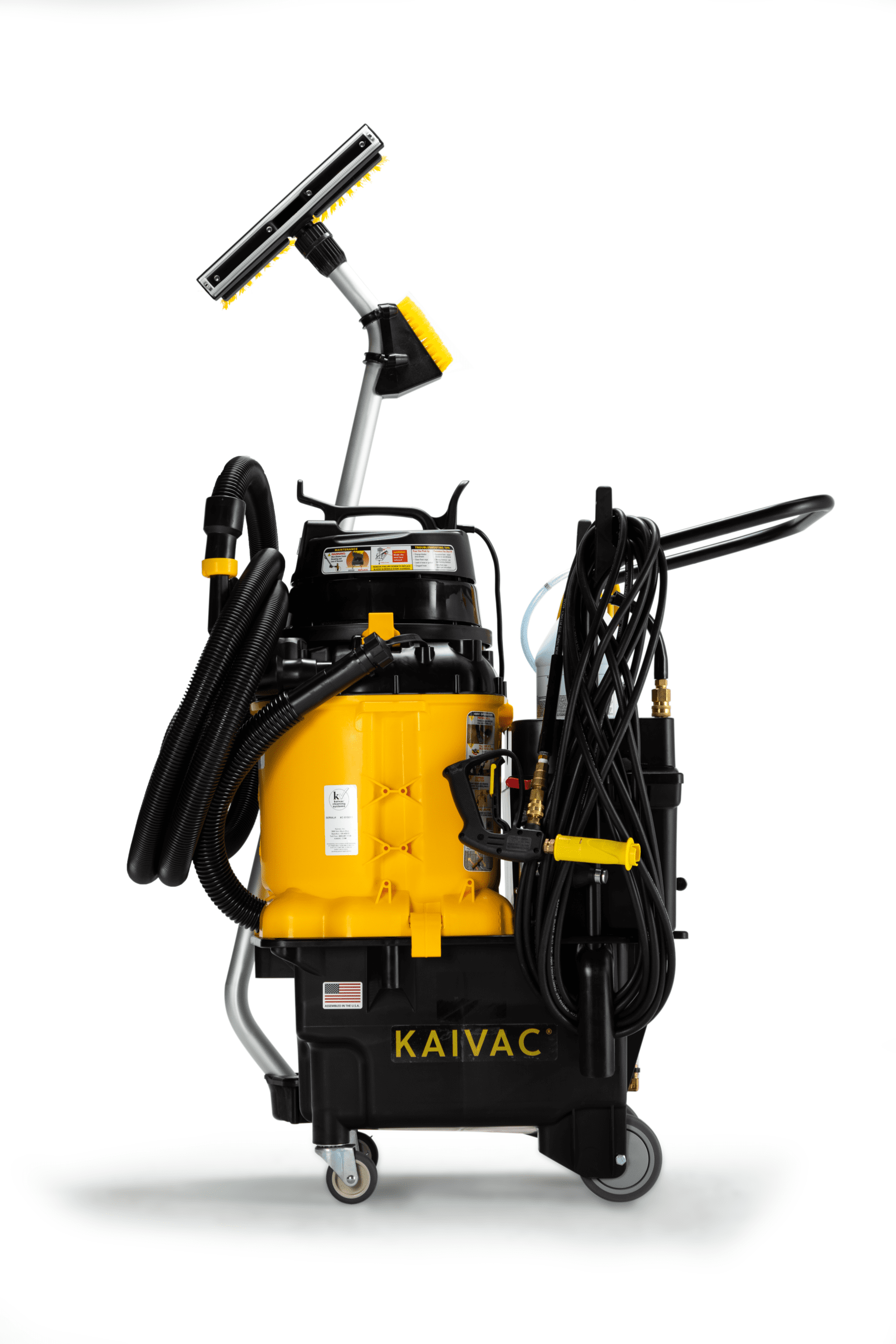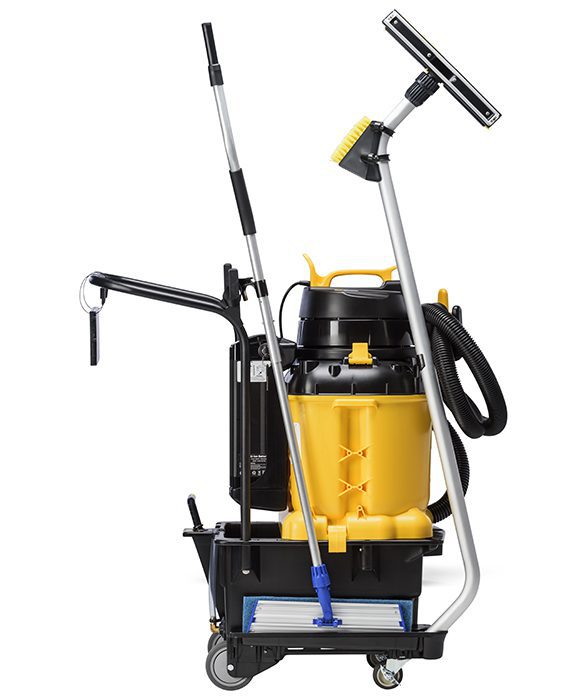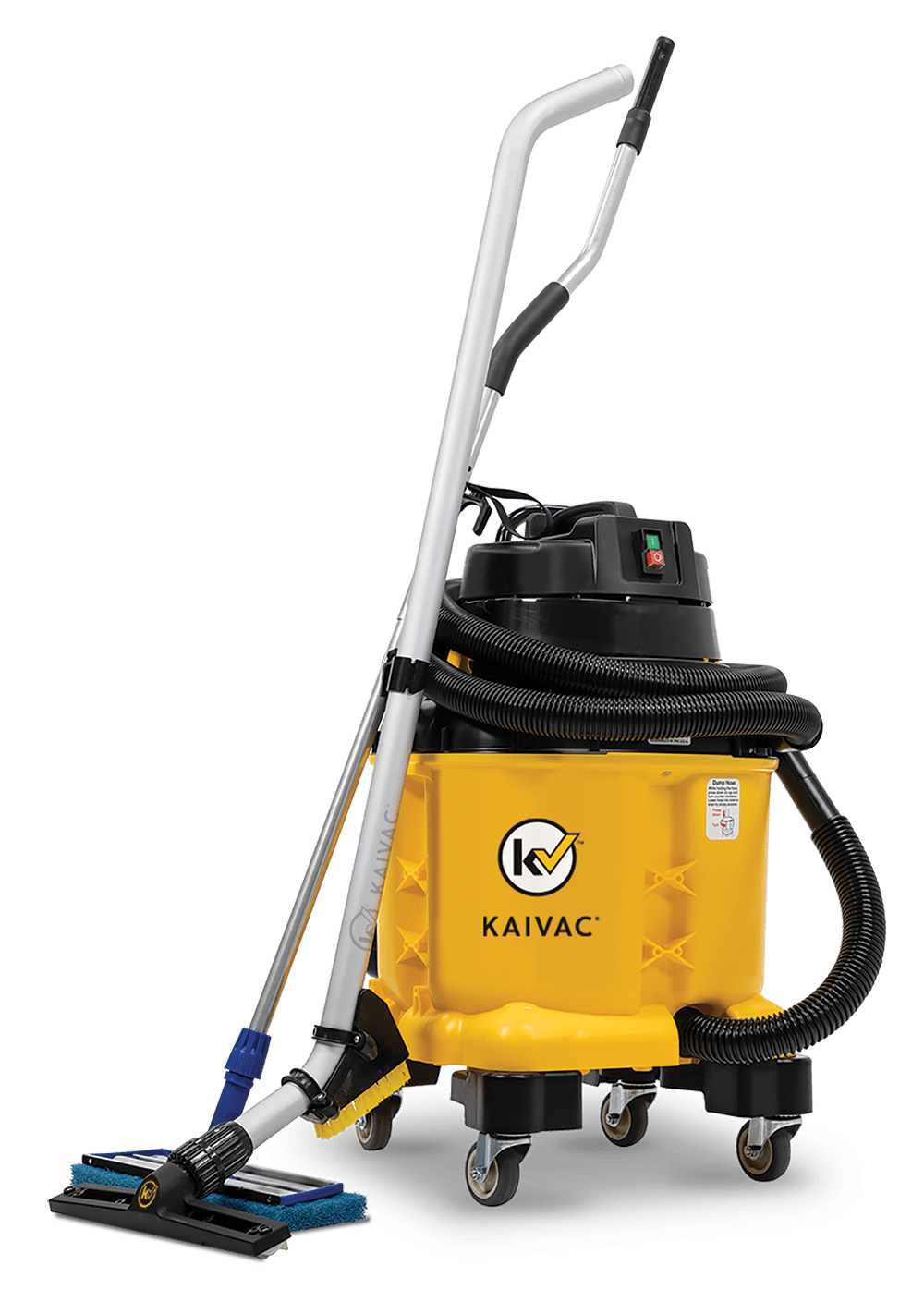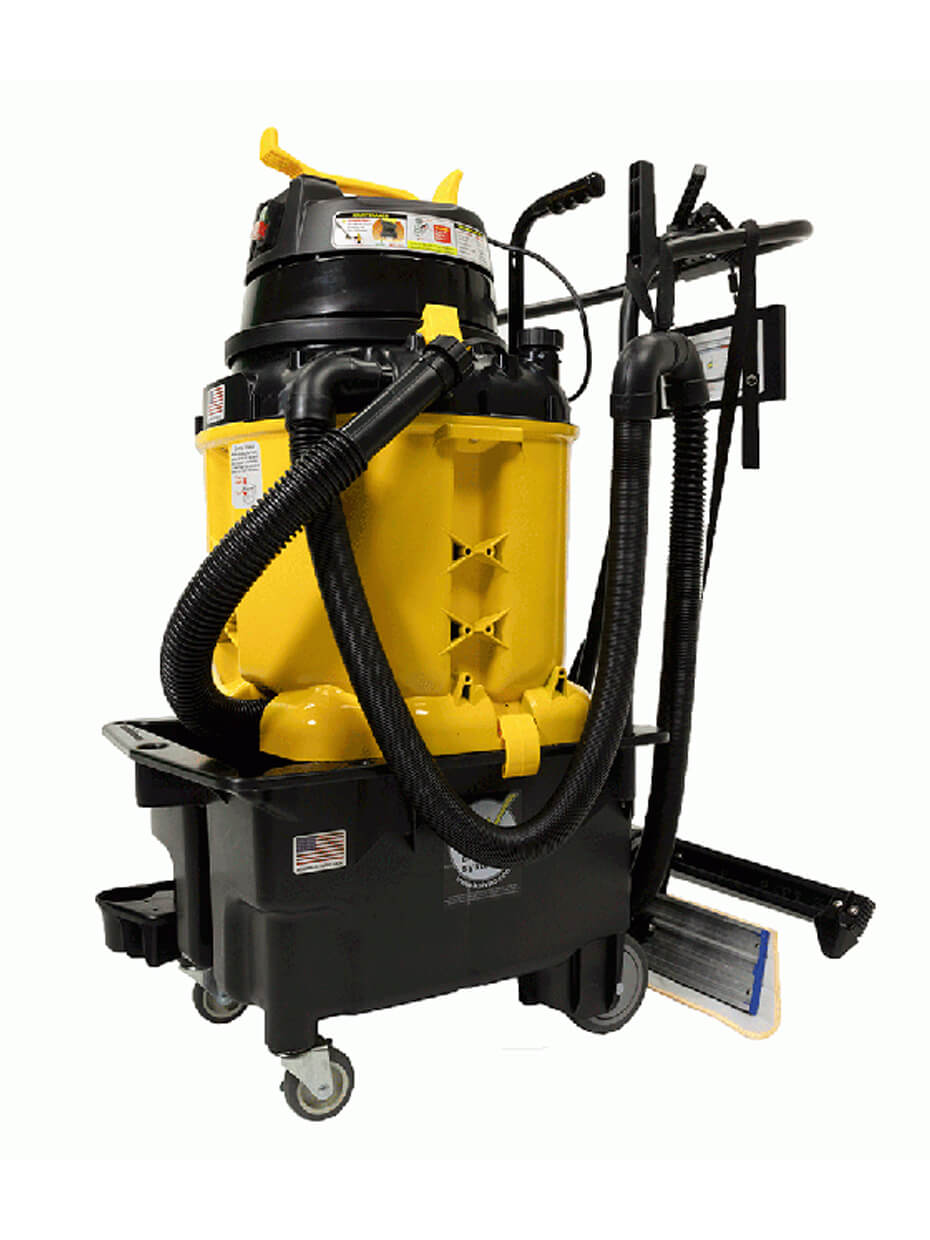The West Virginia Association of Rehabilitation Facilities (WVARF) holds all the janitorial contracts for state-owned facilities (except higher education). They clean a total of 4.1 million square feet. Their mission is “to give every individual with a disability the opportunity for gainful employment.” To that end, WVARF needs, efficient, simple, user-friendly cleaning equipment that cleans to a high standard of appearance and health – that meant stopping the mop.
Mark Jackson, Business Services Liaison for WVARF, learned how traditional string mops fail to clean to a healthy standard when he attended Janitor University in March 2013. Jackson decided to stop the mop and replace them with Kaivac No-Touch Cleaning systems and the AutoVac.
“Instead of spreading sewage with a Kentucky string mop, we now vacuum recover it and remove it from the building,” said Jackson. “Not only do Kaivac technologies produce a more hygienically clean result, but they also clean floors several times faster than a mop.”
A No-Touch Cleaning system combines an indoor pressure washer with a vacuum extractor. Cleaners spray water resistant fixtures and surfaces with solution, allow for dwell time, and suction soiled solution into a separate recovery tank. The Kaivac AutoVac also separates soiled solution while cleaning in the manner of a walk-behind scrubber. These methods eliminate cross-contamination by stopping the mop.
The Failure of Mops
According to a study printed in the April 2008 issue Controlled Environments by Jay Glasel, PhD, mops remove only about 50 percent of surface bacteria. At a time when public facilities can be transmission points for Hepatitis A, Shigella, and Salmonella, the need for effective and healthy cleaning methods is becoming more urgent.
“Personally, I think that mopping is a big problem,” said Jackson. “With Kaivac technologies, we know we are cleaning more hygienically. When we clean more hygienically, it saves money for our state agencies and their customers, and it helps protect our workers. We can reduce contamination, absenteeism, and hospital care.”
According to Jackson, government agencies are pushing for faster and faster cleaning rates with no drop in performance. In addition, WVARF employs a workforce with a range of disabilities. In order for them to stay competitive with the rest of the industry, their equipment needs to be fast, effective, and easy for their employees to learn and use.
“Kaivac makes simple machines that produce extraordinary results,” said Jackson. “At WVARF, they are helping us give more opportunities to individuals with disabilities.”
